SURVIVAL PONCHO, AN INDISPENSABLE AND AFFORDABLE PIECE OF GEAR
Guns, knives, flashlights, devices for making fire, a cook pot and spork, paracord, and ways to treat and carry water – those things are always on my list when I gather gear to head out on an adventure.
But there’s something else that I include on my list that I don’t see on many other lists. That something else is a waterproof poncho. Perhaps that’s because I have a dark cloud hanging over my head, or maybe it’s just because I spend most of my time in the Northeast. I get rained on a lot. I’ve always joked that if the forecast calls for a 20 percent chance of rain, then it means that I’m the one in five who’s going to get wet.
A PONCHO’S MANY USES
I consider the poncho an indispensable piece of gear all year long because of all the ways I can use it. Here are some of them:
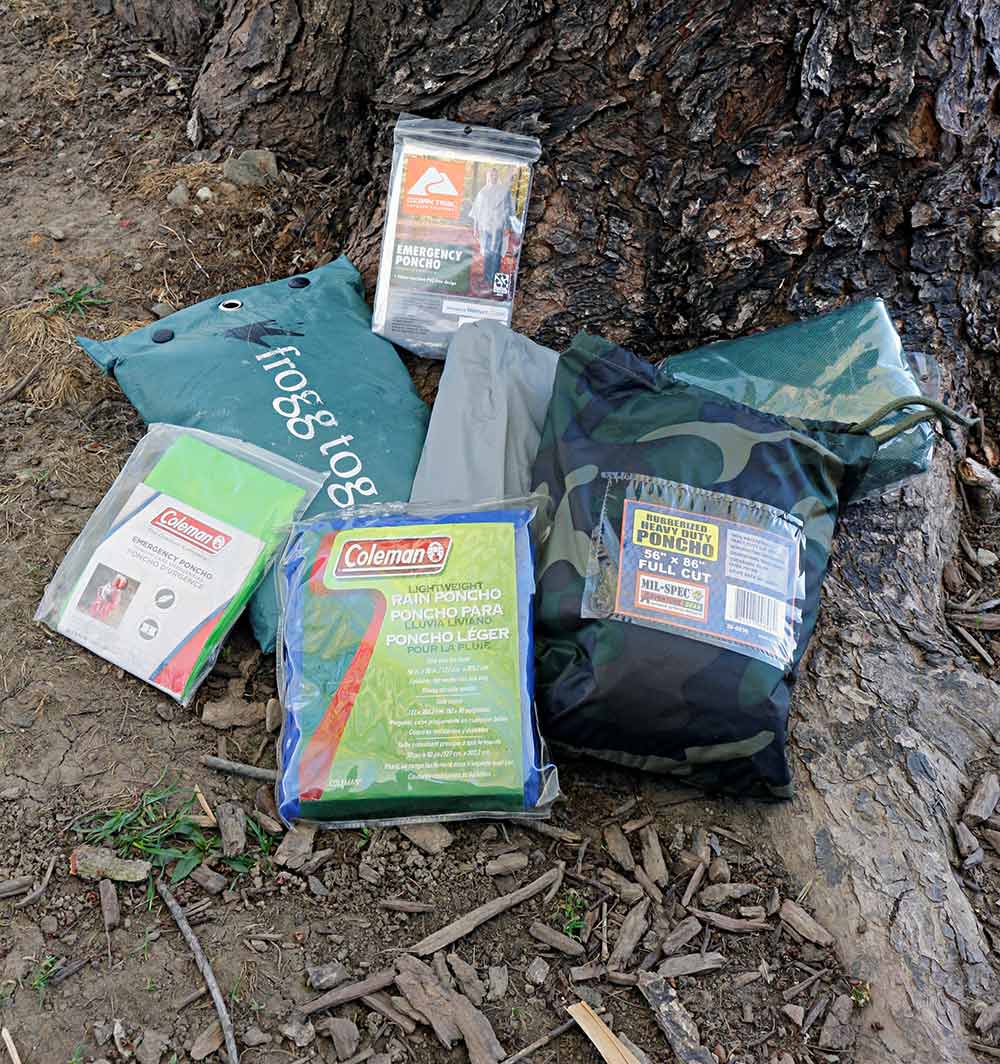
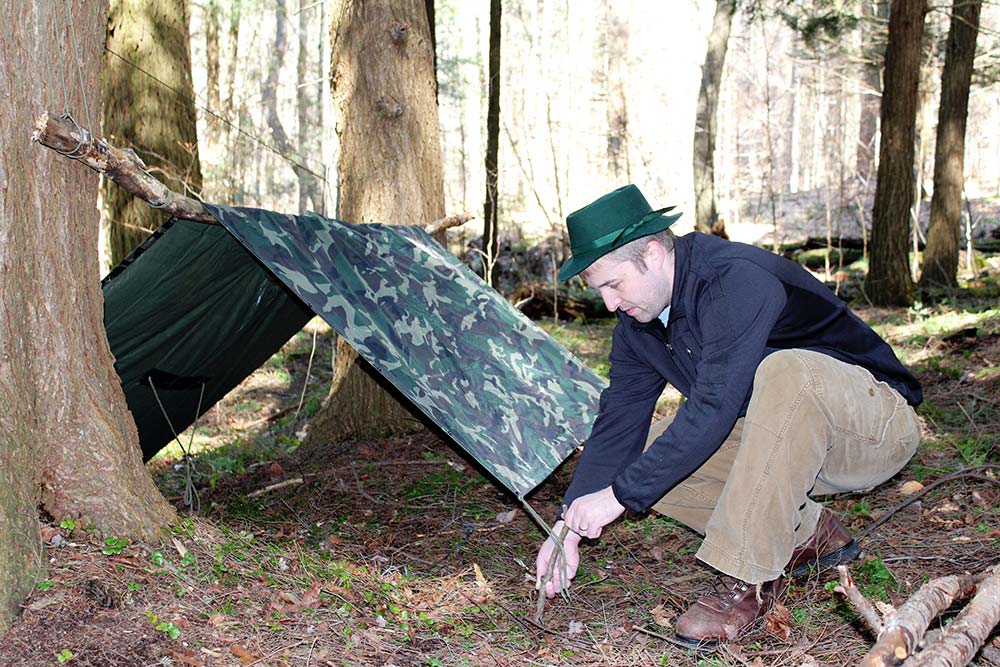
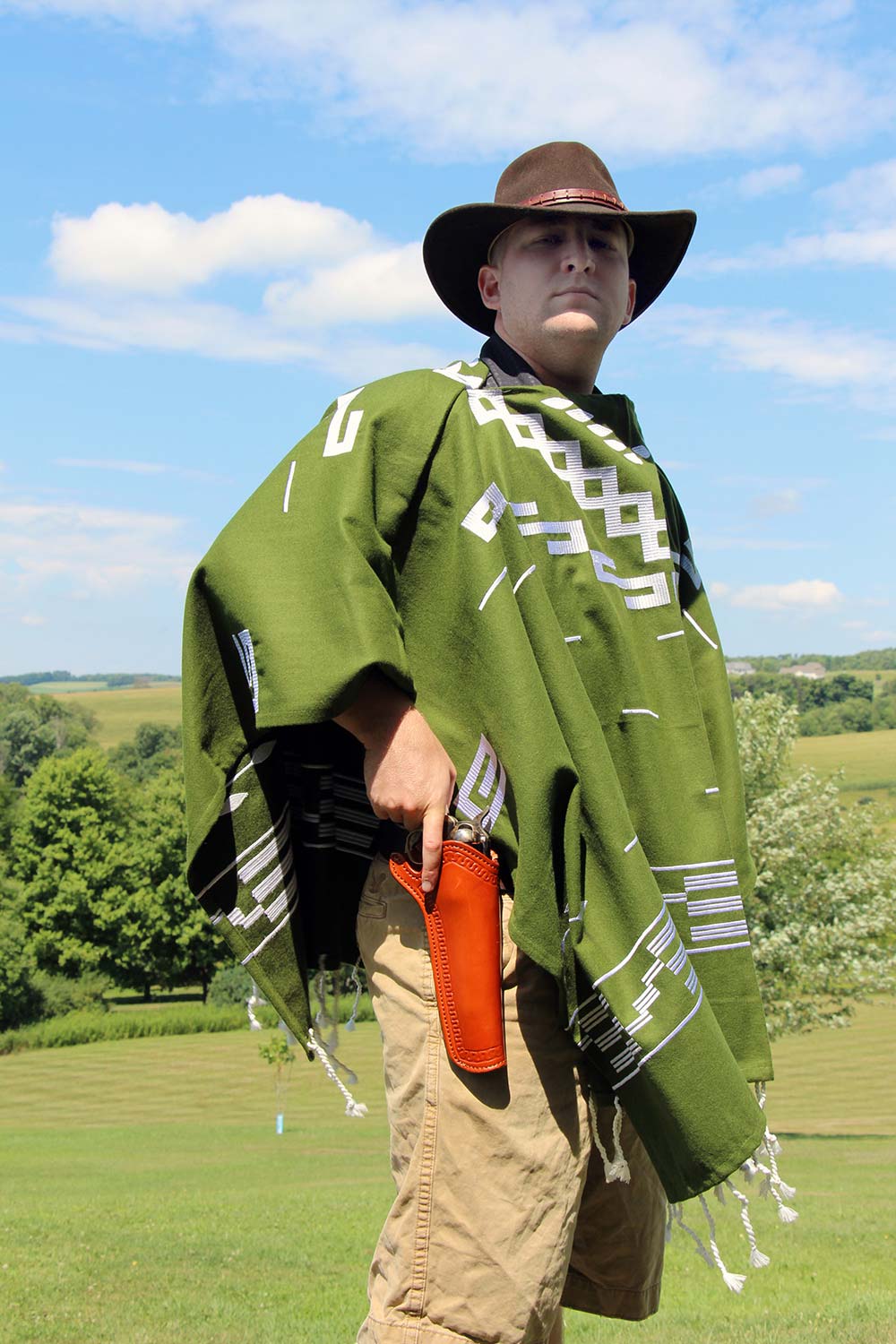
2 Windbreaker. Even when it’s not raining, I’ve often put a poncho on during breaks from hiking or hunting when I didn’t want to become chilled.
3 Dry Seat. When wandering the woods in times of rain or snow, I’ve frequently draped a poncho over a log so that I’d have a dry place to sit to prepare my lunch or to watch a likely spot when hunting. I’ve used a poncho as a dry seat many times at sporting events when the bleachers were wet. That’s one reason I keep one in my car, too.
4 Shelter. Most full-size ponchos are big enough to rig into a shelter of either an A-frame or lean-to configuration.
5 Ground Cloth. The poncho excels as a ground cloth when sleeping under the stars and comes in handy if you’re using a tarp rigged as a shelter. If it’s raining when you need to exit your shelter, you can pick up the poncho and put it on while still under the protection of the tarp. I’ve also used a poncho simply for a dry place to set my pack on mushy ground.
6 Keeping Gun Dry. One advantage of a poncho over a conventional rain jacket is that you can tuck a rifle or shotgun underneath it to protect it from the elements.
7 Heat Reflector. Don’t let the heat of your campfire just dissipate into the night. You can rig your poncho so that it keeps more of the heat in your direction. Watch out for the smoke.
8 Upholstery Saver. With the rear seats folded down, I’ve spread a poncho out in the back of my hatchback before transporting live, muddy dogs or dead, bloody deer.
9 Rain Catcher. Without a supply of drinking water nearby, you could rig your poncho to catch rain water, making use of the hood hole to funnel runoff into your water bottle.
10 Pack Cover. Some ponchos are large enough so that your poncho will fit over your backpack while you’re wearing it. Some are designed specifically with a longer rear panel just for that reason.
11 Ground Blind. I have rigged a camo-colored poncho with some paracord to form a makeshift ground blind when hunting.
12 Roadside Assistance. You can kneel on a poncho when changing a flat tire or spread the poncho before crawling under your car to remove a section of the exhaust that’s dragging. I’ve done both.
MANY TYPES AVAILABLE
Ponchos vary from super-thin models that fold to fit in a pocket to larger, more substantial versions that can double as shelters. All can be useful. Recently I picked up three pocket-sized ponchos in a bin at Walmart for 98 cents each. They are labeled as “emergency” ponchos because they’re not intended as regular-use garments. They’re pretty much disposable after one use, but I suppose if you’re careful, they might be reused. They’re great for when one of those “what-if” moments becomes reality. I’ve placed mine in a waist pack, shoulder sack, and lumbar pack.
FROGG TOGGS ULTRA-LITE2
I’ve had a Frogg Toggs Ultra-Lite2 Poncho for a couple of years now and I really like it. It’s not something you want to wear if you’re hacking your way through thick, tangled brush, but it weighs just nine ounces, so I often tuck mine into a daypack without worrying about being weighed down. It has side snaps and a substantial hood with drawstring and cord locks.
It also comes with a stuff sack that can be used a number of ways. It sells for a suggested $19.99. At that price, it wouldn’t be hard to invest in one every two or three years if necessary. I’ve used mine quite a bit and it isn’t necessary to replace mine yet.
“Ponchos vary from super-thin models that fold to fit in a pocket to larger, more substantial versions that can double as shelters.”
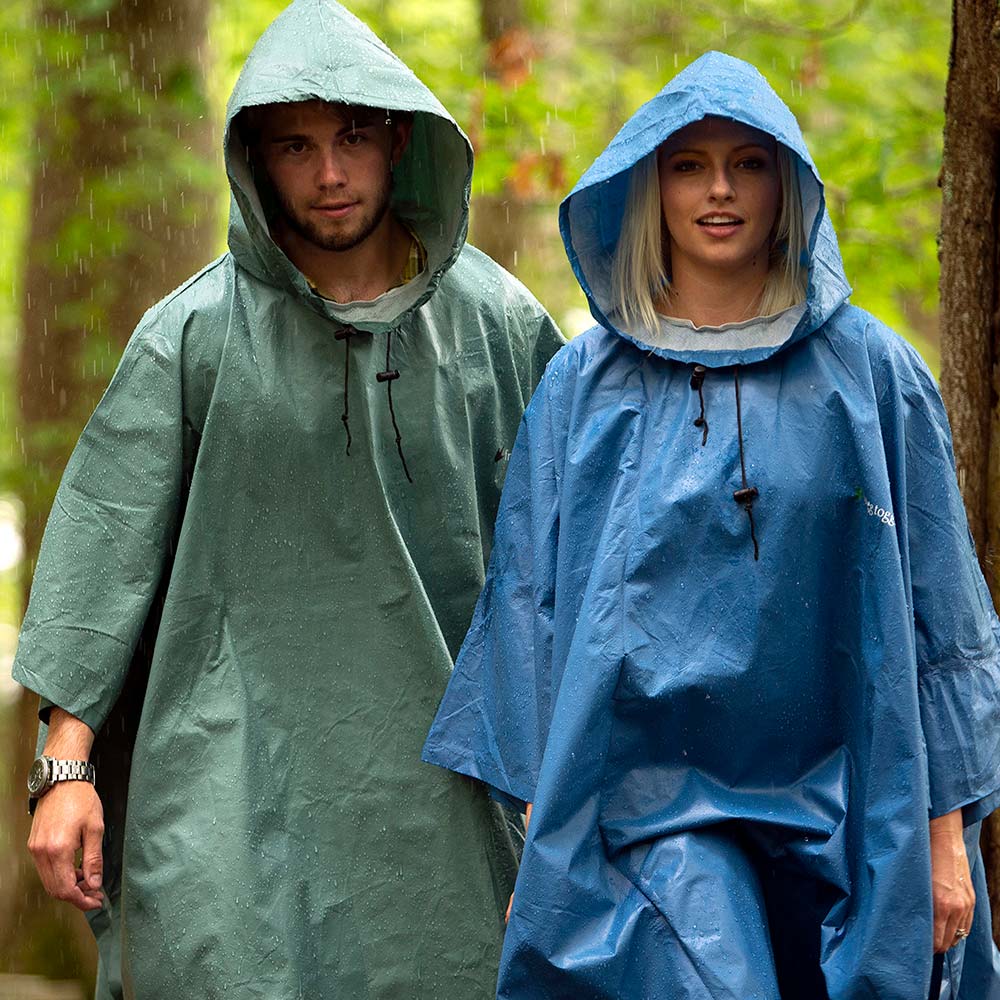
HEAVY-DUTY PONCHO
My favorite poncho is the Major Surplus & Survival Mil-Spec Plus Rubberized Heavy Duty Poncho that sells for $34.95. I own several of them. It’s large enough at 56 x 86 inches to cover you and a daypack. It’s made of rubber-coated nylon, which makes it very rugged but also very heavy.
It weighs just short of two pounds, but I’m actually saving weight when this poncho does double duty and serves in place of a tent.
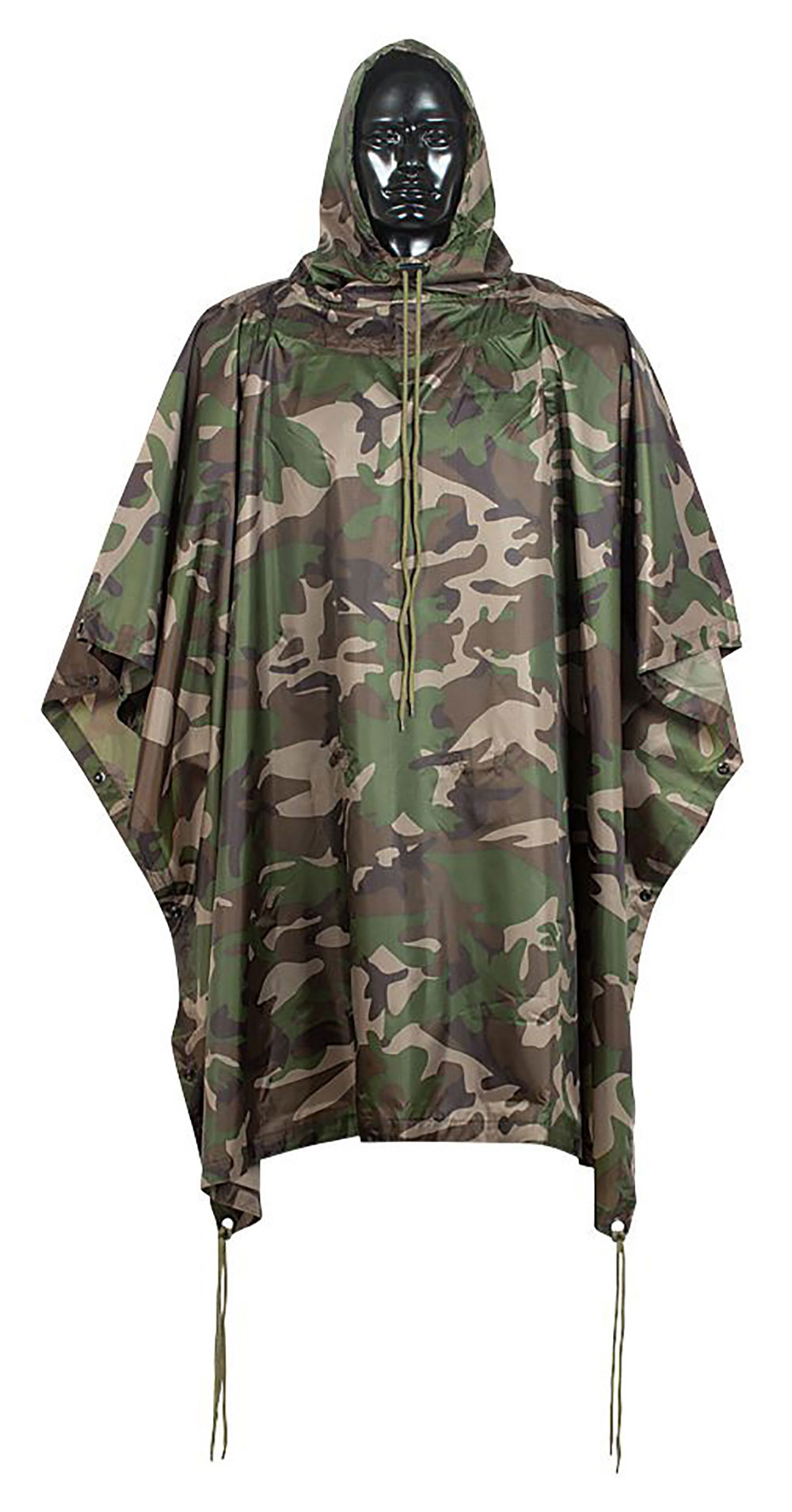
This poncho has very secure side snaps to keep the sides together and you could use them to snap two of these ponchos together to make a larger shelter if needed. It also has rust-resistant metal grommets around the edges with ties already attached at the corners.
Wedge a long branch between two trees about 2 ½ to 3 feet above and parallel to the ground, drape the poncho over it, and stake out the sides by attaching the ties to pointy sticks pushed into the ground.
That’s all that’s needed to make a decent shelter. I can actually set this up faster than I can most of the tents I’ve owned. In my daypacks and full-size rucks, this is the poncho I pack along most often if there’s even a very small chance I’ll have to spend the night in the woods.
BACKPACKER MODEL
The Outdoor Products Poncho Backpacker is an interesting poncho in that it has a longer back panel so that it will fit over a full-size backpack you’re wearing. That longer section snaps up out of the way for times when you’re not shouldering a pack. It also features a drawstring hood and has ties on the four corners. It sells for a suggested $31.
“Most full-size ponchos are big enough to rig into a shelter of either an A-frame or lean-to configuration.”
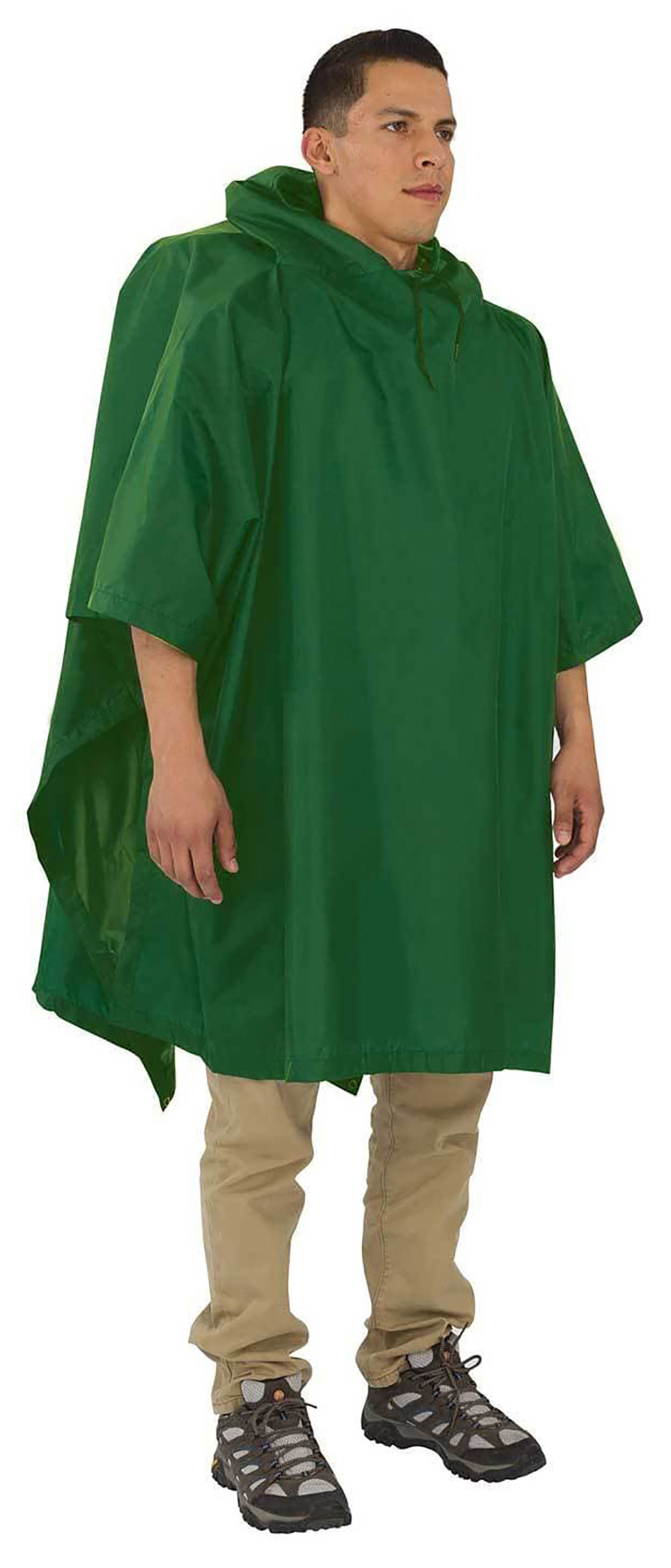
A STAY-WARM PONCH0
SOL (Survive Outdoors Longer) is a company with several very interesting products. One of them is the Heat Reflective Poncho that sells for $7.99. Basically, it works like a heat reflective emergency blanket that’s formed into a poncho shape.
The website doesn’t say what it’s made of other than it’s a durable, tear-resistant material that “won’t shred like mylar.” It’s reusable, weighs just 2.7 ounces, and folds into the size of a package of ramen noodles. Staying dry while also keeping from becoming chilled is a good thing. I’m going to buy one and see how it works.
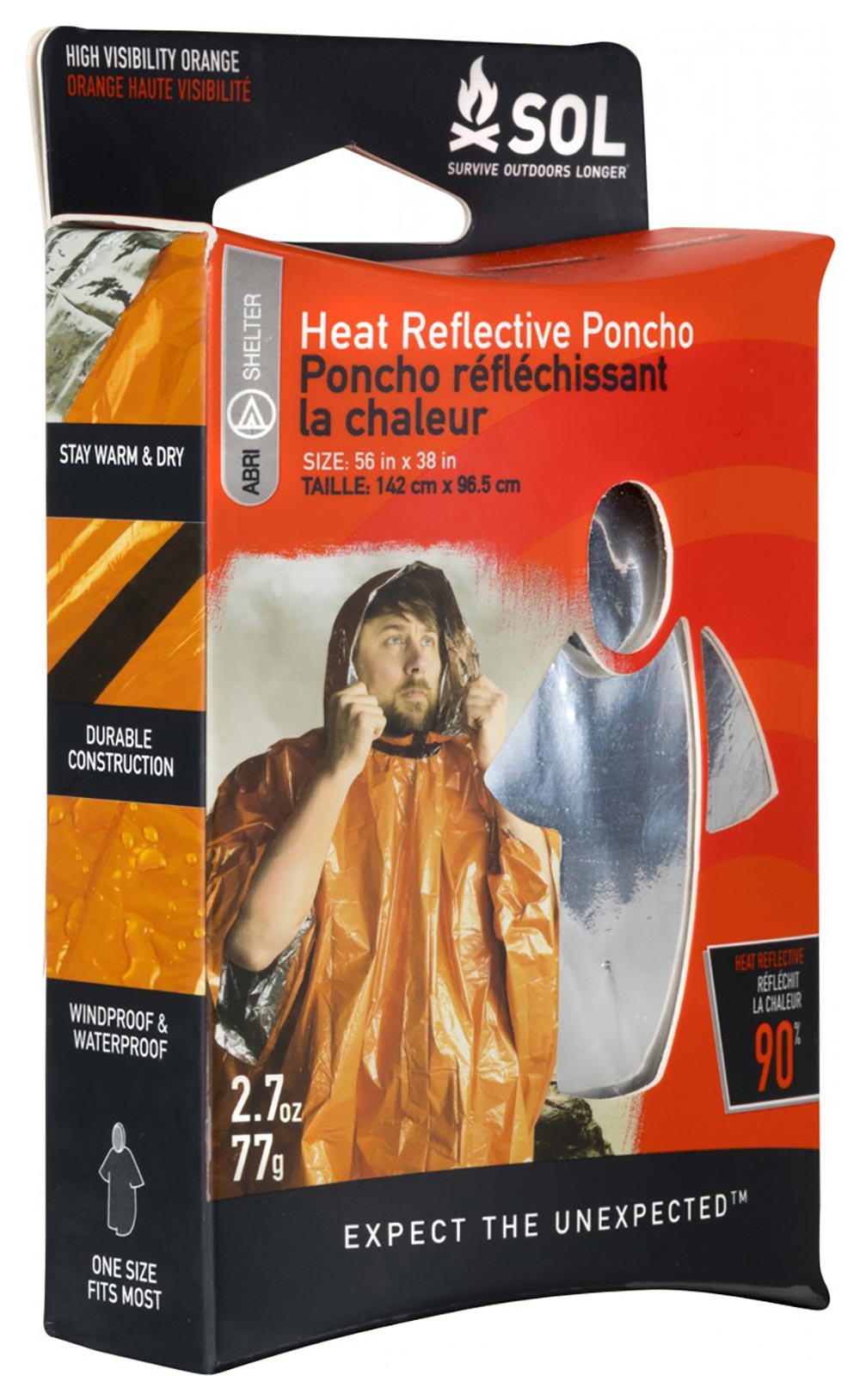
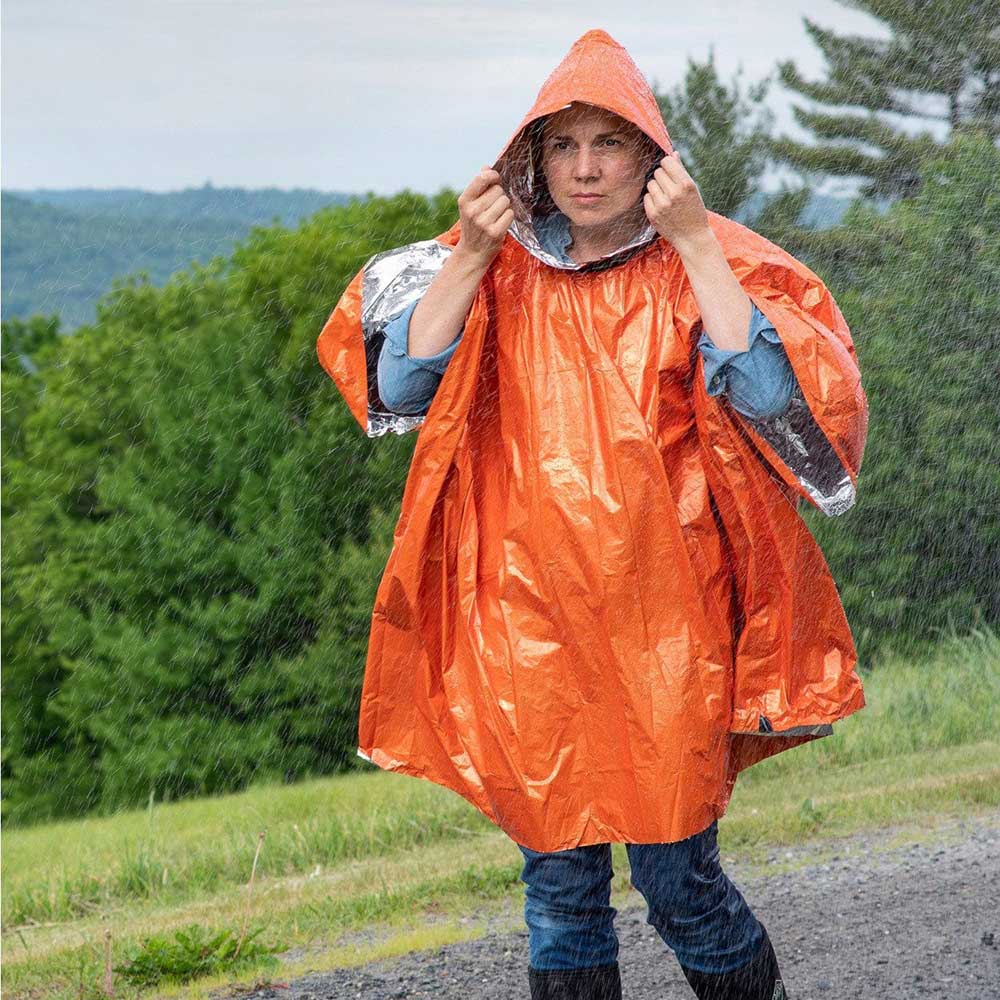
SOL photo
NOT PERFECT
As much as I like ponchos, they’re not perfect in every way. They tend to blow around in strong winds. This problem can be mitigated by wearing a belt around it on the outside or improvising a belt with a length of paracord.
Another mark against a poncho is that it doesn’t provide complete coverage the way a complete rain suit does. If you’re wearing long pants, expect your pantlegs below the knee to get wet. Still I prefer the poncho to a rain jacket alone. On a couple of occasions, I’ve worn a poncho in conjunction with rain pants to give me more complete coverage against the weather. That way I still had all of the other uses for the poncho available to me.
SOURCES
Major Surplus & Survival
www.MajorSurplus.com
Outdoor Products
www.OutdoorProducts.com
Frogg Toggs
www.FroggToggs.com
SOL
www.surviveoutdoorslonger.com
A version of this article first appeared in the June 2022 issue of American Outdoor Guide Boundless.

